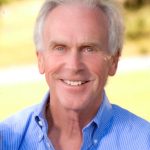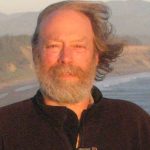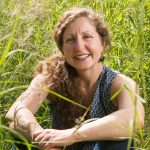Forest policy looms over Oregon’s climate change debate
For as long as climate change legislation has been debated in Oregon, the forestry sector has been the ghost in the room.
If policymakers bothered to discuss it at all, they assumed the sector was carbon neutral, with the greenhouse gas emissions from logging offset by replanting and forest growth each year. But no one really knew; the data didn’t exist for Oregon. And in a state where big timber exercises outsize political clout relative to its economic importance, the politics of including it in any potential regulation or strategy to increase carbon stocks was simply a nonstarter.
Until now.
As lawmakers gear up to make another attempt to pass a climate change bill in 2019, new data suggests that the forest sector is not only a factor in Oregon’s carbon picture, it is THE factor and one of national and even international importance as lawmakers look to reduce the concentration of heat trapping gases in the atmosphere.
Keep reading at online at The Oregonian
Central Oregon wildfire season off to busy start
Number of fires in June double from recent years
In a recent interview with KTVZ in Central Oregon, Dr. Dominick DellaSala explains the environmental factors that lead to an increase in potential wildfires.
Central Oregon wildfire season off to busy start
Number of fires in June double from recent years
In a recent interview with KTVZ in Central Oregon, Dr. Dominick DellaSala explains the environmental factors that lead to an increase in potential wildfires.
223 international scientists call for urgent action to protect British Columbia’s endangered temperate rainforests
For Immediate Release June 28, 2018
Contacts: Dr. Dominick A. DellaSala, President, Chief Scientist, Geos Institute, Ashland, Oregon, Cell 541-621-7223 | Dr. Barbara Zimmerman, Director, International Conservation Fund Canada, b.zimmerman@wild.org | Dr. Andy MacKinnon, BC Forest Ecologist, Cell 250-889-6453
Ashland, OR —The Government of British Columbia must take urgent and immediate action to protect the globally unique ecological values of BC’s remaining primary and intact coastal and inland temperate rainforest, say 223 prominent scientists from around the world in a letter released today.
The scientists specifically call for action to protect temperate rainforests along BC’s south coast and Vancouver Island, and inland rainforests on the windward side of the Columbia and Rocky Mountains, all of which remain at risk with insufficient conservation.
The letter was organized by Dr. Dominick DellaSala, chief scientist at the Geos Institute in Ashland, Oregon and author of Temperate and Boreal Rainforests of the World: Ecology and Conservation (Island Press). According to DellaSala, “BC’s temperate rainforests are globally rare, they offer habitat for many imperiled species and globally the vast majority of these unique rainforests has already been logged. Protection of remaining intact tracts of these carbon-rich, climate saving forests is a global responsibility and can help Canada to contribute to the 2020 UN biodiversity targets and the Paris Climate Agreement.” Recently, the ninth largest Douglas-fir in Canada was cut down in the Nahmint Valley near Port Alberni. The tree, which was 66 metres tall and three metres in diameter, was in an old-growth cut block auctioned off by the BC government.
Temperate rainforests are rare, constituting just 2.5 per cent of the earth’s forests. British Columbia is home to one quarter of that total and BC’s inland rainforests are one of only two such areas worldwide.
“It is hard to overstate the cultural significance of these rainforests to the Indigenous peoples who have inhabited this part of the world for millennia,” said Dr. Barbara Zimmerman, Director of the International Conservation Fund Canada. “Their loss would be an enormous blow to all Canadians and all people of the world. Destruction of the last remnants of ancient old-growth forest with their magnificent trees and complex web of life is a rapidly unfolding tragedy and the vast majority of Canadians are unaware that it is even happening.”
According to recent estimates by Sierra Club BC, logging of old-growth temperate rainforest is currently destroying 10,000 hectares per year on Vancouver Island—the equivalent of two soccer fields per hour, 24 hours per day. Productive old-growth rainforests in lower elevations have been reduced to less than 10 per cent of their original extent. Plants and animals that depend on these rainforests are not just losing habitat, but also are suffering climate change impacts such as extended droughts, extreme rainfall and severe storms, threatening to push ecosystems to limits. Similar losses are occurring in the inland rainforest region where logging of old-growth rainforest has been extensive and is contributing to the demise of mountain caribou.
“BC has inspired the world with conservation solutions in Haida Gwaii and the Great Bear Rainforest. The province should take similar action to safeguard what remains of these globally outstanding ancient forests in other parts of the province,” said BC forest ecologist Andy MacKinnon. “The provincial government should follow through on its promise and take action for old-growth conservation using the same model and its multiple benefits for biodiversity, communities and the climate.”
Forests absorb atmospheric carbon through the process of photosynthesis and store it in long-lived plants and soils. In doing so, they help to cool down the planet. Cutting down forests releases most of their stored carbon as a global warming pollutant.
The experts are urging the provincial government to follow through on the promise to use the ecosystem-based management approach implemented in the Great Bear Rainforest to safeguard British Columbia’s endangered old-growth rainforest.
The signatories to the letter live and work in many countries, including Argentina, Australia, Canada, Indonesia, Mexico, Mongolia, Norway, the United States and Scotland.
-30-
The letter is available online at: https://geosinstitute.org/past-initiatives/forest-legacies/scientist-network/
Lyme Disease Is Spreading Because of Climate Change
Rising temperatures are helping ticks and their hosts carry a deadly bacterium to new regions.
In a June 15, 2018 article by Lucy Goodchild Van Hilten discusses the connection between climate change and the spread of Lyme disease and other vector-borne diseases with Dr. Dominick DellaSala, Chief Scientist of the Geos Institute.
“Climate change is not an environmental problem,” he said. “It’s human health, economic impact, social dislocation and social injustice, with environment thrown in there too. This is the multiplicity of impacts we’re at the beginning phase of seeing, even before we hit the 2˚C change, which is on the horizon.
Read the full article at Alternet.org
BC Rainforest Scientist Letter
Over 220 international scientists called on the British Columbia government to halt the rapacious logging of temperate rainforests in the province. BC coastal and inland rainforests are globally rare and strategic to Canada’s commitments to the Paris climate change accord. Read the full letter here.

Old Growth BC rainforests are among the most carbon dense forests on Earth, playing a strategic role in Canada’s commitments to the historic Paris climate change accord. (Photo credit: Conservation North)
Click for the June 28, 2018 press release.
Additional Information
- Interview: Early Edition with Stephen Quinn (Vancouver)
- Interview: On the Island with Gregor Craigie (Vancouver Island)
- Interview: Daybreak South with Chris Walker (Kelowna and Interior BC)
- Interview: Daybreak North with Carolina de Ryk (Prince Rupert, Prince George, Northern BC) – segment begins at 1 hour, 22 minutes
- Article: 223 international scientists urge B.C. to protect provincial rainforests (CBC, June 28, 2018)
- Article: If an old-growth tree falls in a forest, does it make political hay? (Jack Knox for the Times-Colonist, June 29, 2018)
- Op-Ed: Our rainforests need action urgently (Jens Weiting, Times-Colonist, July 11, 2018)
- Article: B.C. loggers aim to transition away from harvesting old growth — but it could take 90 years (Jon Hernandez, CBC News, July 8, 2018)
You can also learn more about this and other temperate rainforests in “Temperate and Boreal Rainforests of the World” by Dr. Dominick DellaSala.
BC Rainforest Scientist Letter
Over 220 international scientists called on the British Columbia government to halt the rapacious logging of temperate rainforests in the province. BC coastal and inland rainforests are globally rare and strategic to Canada’s commitments to the Paris climate change accord. Read the full letter here.

Old Growth BC rainforests are among the most carbon dense forests on Earth, playing a strategic role in Canada’s commitments to the historic Paris climate change accord. (Photo credit: Conservation North)
Click for the June 28, 2018 press release.
Media Coverage
- Interview: Early Edition with Stephen Quinn (Vancouver)
- Interview: On the Island with Gregor Craigie (Vancouver Island)
- Interview: Daybreak South with Chris Walker (Kelowna and Interior BC)
- Interview: Daybreak North with Carolina de Ryk (Prince Rupert, Prince George, Northern BC) – segment begins at 1 hour, 22 minutes
- Article: 223 international scientists urge B.C. to protect provincial rainforests (CBC, June 28, 2018)
- Article: If an old-growth tree falls in a forest, does it make political hay? (Jack Knox for the Times-Colonist, June 29, 2018)
- Op-Ed: Call for action on B.C.’s old-growth rainforests (Dominick DellaSala, Barbara Zimmerman, and Andy MacKinnon, The Province, July 4, 2018)
- Article: B.C. loggers aim to transition away from harvesting old growth — but it could take 90 years (Jon Hernandez, CBC News, July 8, 2018)
- Op-Ed: Our rainforests need action urgently (Jens Weiting, Times-Colonist, July 11, 2018)
You can also learn more about this and other temperate rainforests in “Temperate and Boreal Rainforests of the World” by Dr. Dominick DellaSala.
Walking on the wild side of a snag forest
 This May, Dominick DellaSala was part of a team of researchers and citizen scientists conducting field surveys on the Stanislaus National Forest within the world-class (biodiverse) Sierra-Nevada region of California.
This May, Dominick DellaSala was part of a team of researchers and citizen scientists conducting field surveys on the Stanislaus National Forest within the world-class (biodiverse) Sierra-Nevada region of California.
The trip was on the site of the Rim Fire, California’s third largest in recent history, that burned in 2013 over 250,000 acres bordering Yosemite National Park.
What they found was an ecosystem teeming with life, new growth, and diversity, not a barren wasteland.
Read more about Dominick’s walk on the wild side here.
Why Oregon forests may continue to burn
Last year’s fire season was bad. This year’s could be too. So why does agreement on a plan to reduce the likelihood of forest fires remain elusive?
“We keep hearing that if only we could do active management we could reduce the risk of severe fires,” said Dominick DellaSala, chief scientist at the Geos Institute, a climate change solutions advocacy group based in Ashland. “I heard that continuously when I testified before Congress last September. But when we looked at 1,500 fires, we found it’s the areas with the most active management that had the highest amount of high-severity fires. They wouldn’t believe that data.”
Read the full article by Pete Danko at the Portland Business Journal
Why Oregon forests may continue to burn
Last year’s fire season was bad. This year’s could be too. So why does agreement on a plan to reduce the likelihood of forest fires remain elusive?
“We keep hearing that if only we could do active management we could reduce the risk of severe fires,” said Dominick DellaSala, chief scientist at the Geos Institute, a climate change solutions advocacy group based in Ashland. “I heard that continuously when I testified before Congress last September. But when we looked at 1,500 fires, we found it’s the areas with the most active management that had the highest amount of high-severity fires. They wouldn’t believe that data.”
Read the full article by Pete Danko at the Portland Business Journal
Latest News
Stay Updated!
Sign up to stay updated on our current initiatives and receive information you can use to build resilience in your community.

 Arsum is the Senior Adaptation and Coastal Resilience Specialist for the National Wildlife Federation’s Southcentral Region. In this role, she advances climate adaptation efforts, with a focus on nature-based approaches to address the impacts of climate change and extreme events across the Gulf region. She has authored and co-authored numerous publications on climate impact assessments and adaptation solutions. Additionally, she regularly participates in state-based coastal resilience and hazard mitigation planning across the Gulf, collaborating with regional and local stakeholders.
Arsum is the Senior Adaptation and Coastal Resilience Specialist for the National Wildlife Federation’s Southcentral Region. In this role, she advances climate adaptation efforts, with a focus on nature-based approaches to address the impacts of climate change and extreme events across the Gulf region. She has authored and co-authored numerous publications on climate impact assessments and adaptation solutions. Additionally, she regularly participates in state-based coastal resilience and hazard mitigation planning across the Gulf, collaborating with regional and local stakeholders. Frank is the former President of the Reinsurance Association of America. Frank currently serves on the Advisory Board of the OECD’s International Network for the Financial Management of Large-Scale Disasters, the RAND Center on Catastrophic Risk Management and Compensation, and the University of Cincinnati’s Carl H. Lindner III Center for Insurance and Risk Management Advisory Board.
Frank is the former President of the Reinsurance Association of America. Frank currently serves on the Advisory Board of the OECD’s International Network for the Financial Management of Large-Scale Disasters, the RAND Center on Catastrophic Risk Management and Compensation, and the University of Cincinnati’s Carl H. Lindner III Center for Insurance and Risk Management Advisory Board. Jim is a multilingual world traveler. Based in Bavaria during the 1970s, Jim spent most of this period in India, Afghanistan and Nepal, where he founded and operated a charitable medical clinic serving Tibetan Refugees. He settled in Oregon in 1983 on a forested ranch in the Umpqua National Forest.
Jim is a multilingual world traveler. Based in Bavaria during the 1970s, Jim spent most of this period in India, Afghanistan and Nepal, where he founded and operated a charitable medical clinic serving Tibetan Refugees. He settled in Oregon in 1983 on a forested ranch in the Umpqua National Forest. Dr. Micah Hahn is an Associate Professor of Environmental Health in the Institute for Circumpolar Health Studies at the University of Alaska-Anchorage. She received her joint PhD in Epidemiology / Environment and Resources from the University of Wisconsin-Madison and her MPH in Global Environmental Health from Emory University. Subsequently, she was a postdoctoral fellow for the CDC Climate and Health Program, and in this position worked collaboratively with the CDC Division of Vector-borne Diseases and the National Center for Atmospheric Research. Her research focuses on understanding the health impacts of climate change and working with communities to develop locally-relevant adaptation and resilience-building strategies. Dr. Hahn is also on the Management Team of the Alaska Climate Adaptation Science Center.
Dr. Micah Hahn is an Associate Professor of Environmental Health in the Institute for Circumpolar Health Studies at the University of Alaska-Anchorage. She received her joint PhD in Epidemiology / Environment and Resources from the University of Wisconsin-Madison and her MPH in Global Environmental Health from Emory University. Subsequently, she was a postdoctoral fellow for the CDC Climate and Health Program, and in this position worked collaboratively with the CDC Division of Vector-borne Diseases and the National Center for Atmospheric Research. Her research focuses on understanding the health impacts of climate change and working with communities to develop locally-relevant adaptation and resilience-building strategies. Dr. Hahn is also on the Management Team of the Alaska Climate Adaptation Science Center. Michael is a former Founding Principal of Resilient Cities Catalyst, a global non-profit helping cities and their partners tackle their toughest challenges. He is currently the Executive Director of Climate Resilience Academy at the University of Miami.
Michael is a former Founding Principal of Resilient Cities Catalyst, a global non-profit helping cities and their partners tackle their toughest challenges. He is currently the Executive Director of Climate Resilience Academy at the University of Miami. Dr. Quintus Jett is a consultant, educator, and strategist for public causes. He has a doctorate in Organizations & Management from Stanford University, and a two-decade faculty career which spans schools, departments, and programs of business, engineering, liberal studies, divinity, and public and nonprofit management. Following Hurricane Katrina in 2005, Dr. Jett launched a volunteer project in New Orleans, which enlisted residents, students from over a dozen colleges and universities, and hundreds of others to field map the city’s Gentilly district, Lower Ninth Ward, and New Orleans East. Dr. Jett is an innovator in higher education, bridging the divide between academic research and the other priorities of the modern university, including student access and diversity, community engagement, and providing foundations for life-long learning in today’s rapidly changing world.
Dr. Quintus Jett is a consultant, educator, and strategist for public causes. He has a doctorate in Organizations & Management from Stanford University, and a two-decade faculty career which spans schools, departments, and programs of business, engineering, liberal studies, divinity, and public and nonprofit management. Following Hurricane Katrina in 2005, Dr. Jett launched a volunteer project in New Orleans, which enlisted residents, students from over a dozen colleges and universities, and hundreds of others to field map the city’s Gentilly district, Lower Ninth Ward, and New Orleans East. Dr. Jett is an innovator in higher education, bridging the divide between academic research and the other priorities of the modern university, including student access and diversity, community engagement, and providing foundations for life-long learning in today’s rapidly changing world. Matthew is a retired high school teacher who was once honored as Oregon High School Social Studies Teacher of the Year. Before his teaching career he was in the restaurant business in Portland. He is also a lawyer who has been a member of the Oregon State Bar Association since 1980.
Matthew is a retired high school teacher who was once honored as Oregon High School Social Studies Teacher of the Year. Before his teaching career he was in the restaurant business in Portland. He is also a lawyer who has been a member of the Oregon State Bar Association since 1980. Linda has many years of experience in disaster preparedness and resilience. She has been an elected official on the Linn County Iowa Board of Supervisors, Chair of the Metropolitan Planning Organization, the East Central Iowa Council of Governments, the statewide Mental Health Developmental Disability and the Linn County Board of Health. Langston is a former president of the National Association of Counties (2013-2014).
Linda has many years of experience in disaster preparedness and resilience. She has been an elected official on the Linn County Iowa Board of Supervisors, Chair of the Metropolitan Planning Organization, the East Central Iowa Council of Governments, the statewide Mental Health Developmental Disability and the Linn County Board of Health. Langston is a former president of the National Association of Counties (2013-2014). Scott is Monfort Professor of Atmospheric Science at Colorado State University. He has written about 100 publications in the peer-reviewed climate literature, is a former editor of the Journal of Climate, and served for five years as founding Science Chair of the North American Carbon Program.
Scott is Monfort Professor of Atmospheric Science at Colorado State University. He has written about 100 publications in the peer-reviewed climate literature, is a former editor of the Journal of Climate, and served for five years as founding Science Chair of the North American Carbon Program. Ken works with families and organizations as a mediator, organizational consultant, trainer and facilitator. Along with his passion for helping people prepare for and reduce climate change, Ken also volunteers as a mediator through Mediation Works and is passionate about supporting youth through mentoring with Boys to Men of Southern Oregon.
Ken works with families and organizations as a mediator, organizational consultant, trainer and facilitator. Along with his passion for helping people prepare for and reduce climate change, Ken also volunteers as a mediator through Mediation Works and is passionate about supporting youth through mentoring with Boys to Men of Southern Oregon. Andrea is the Resilience Policy Advisor for the North Carolina Office of Recovery and Resiliency. She works across state agencies and with local governments to increase the state’s resilience to the impacts of climate change.
Andrea is the Resilience Policy Advisor for the North Carolina Office of Recovery and Resiliency. She works across state agencies and with local governments to increase the state’s resilience to the impacts of climate change.